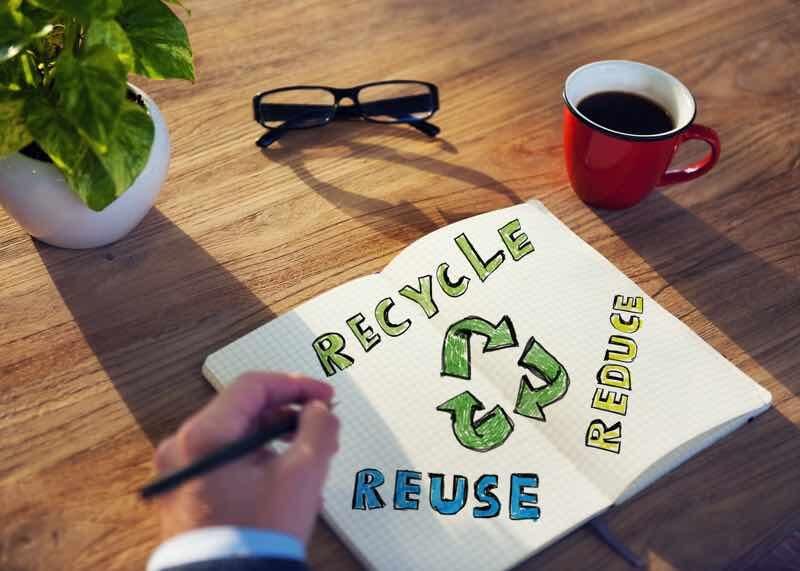The concept of a circular economy in printing is reshaping the industry by promoting sustainability and efficiency. As businesses increasingly recognize the need to minimize waste and optimize resources, the printing sector is undergoing a significant transformation. In this article, we explore how the adoption of circular economy principles is revolutionizing printing practices, making them more sustainable and eco-friendly.
At its core, a circular economy aims to eliminate waste and continually use resources. In the context of printing, this means rethinking the entire lifecycle of print products, from design and production to consumption and recycling. This approach not only benefits the environment but also offers economic advantages to businesses by reducing costs and enhancing brand reputation.

Understanding the Circular Economy in Printing
The printing industry has long been associated with high levels of waste, primarily due to the traditional linear production processes. However, the shift towards a circular economy is changing this narrative. By focusing on resource efficiency, waste reduction, and recycling, printing companies can significantly reduce their environmental impact.
Key Principles of Circular Economy in Printing
- Design for Longevity: Products are designed to last longer, reducing the need for frequent replacements.
- Resource Efficiency: Optimizing the use of materials and energy to minimize waste.
- Recycling and Reuse: Encouraging the recycling and reuse of materials to keep them in circulation.
The Role of Technology in Eco-Friendly Printing
Technology plays a crucial role in enabling the circular economy within the printing sector. Innovations such as digital printing, which reduces material waste, and advanced recycling technologies are paving the way for more sustainable practices. By investing in modern equipment and processes, printing companies can achieve significant environmental benefits.
Digital Printing: A Game Changer
Digital printing has revolutionized the industry by enabling on-demand production, reducing waste, and improving efficiency. Unlike traditional printing methods, digital printing does not require plates, which eliminates the need for chemicals and reduces setup waste. This technology allows for precise control over ink usage, further minimizing waste.
Adopting Sustainable Materials
One of the most effective ways to promote a circular economy in printing is by using sustainable materials. Recycled paper, biodegradable inks, and eco-friendly coatings are becoming increasingly popular choices for environmentally conscious businesses. By opting for such materials, companies can reduce their environmental footprint while meeting consumer demand for sustainable products.
Recycled Paper: A Step Towards Sustainability
Using recycled paper is a simple yet impactful way to support the circular economy. Recycled paper requires less energy and water to produce compared to virgin paper, and it reduces the demand for raw materials. Many businesses are also exploring alternative paper options to further enhance their sustainability efforts.
Collaboration and Innovation
For the circular economy to thrive in the printing industry, collaboration among stakeholders is essential. From suppliers and manufacturers to customers and recyclers, everyone plays a vital role in creating a sustainable ecosystem. By working together, the industry can develop innovative solutions to common challenges, such as waste management and resource scarcity.
Partnering with Green Initiatives
Many printing companies are partnering with green initiatives to enhance their sustainability practices. These partnerships help businesses access resources and expertise needed to implement effective circular economy strategies, ultimately leading to a more sustainable future.
Economic Benefits of Circular Printing
Adopting a circular economy approach in printing offers numerous economic advantages. By reducing waste and optimizing resource use, businesses can lower their operating costs. Additionally, sustainable practices can improve brand reputation and attract environmentally conscious consumers, leading to increased sales and customer loyalty.
Cost Savings Through Efficiency
Implementing circular economy practices often leads to significant cost savings. By minimizing waste and maximizing resource efficiency, printing companies can reduce expenses related to raw materials, energy, and waste disposal. These savings can be reinvested into further sustainability initiatives, creating a positive feedback loop.
Challenges and Opportunities
While the transition to a circular economy in printing presents numerous opportunities, it also comes with challenges. Overcoming these obstacles requires commitment and innovation from all industry stakeholders. By addressing these challenges head-on, the printing industry can unlock the full potential of a circular economy.
Overcoming Barriers to Adoption
Resistance to change is one of the main barriers to adopting circular economy practices. However, by educating stakeholders about the benefits and providing incentives for sustainable practices, the industry can overcome these barriers and move towards a more sustainable future.
Future of Circular Economy in Printing
The future of the circular economy in printing is promising. As technology continues to advance and businesses increasingly prioritize sustainability, the printing industry is poised for significant transformation. By embracing circular economy principles, the industry can achieve a sustainable and prosperous future.
Embracing Innovation
Innovation will be key to the future success of the circular economy in printing. By continuously exploring new technologies and materials, the industry can develop more efficient and sustainable practices, ensuring a brighter future for both the environment and the economy.
Conclusion
In conclusion, the circular economy in printing represents a significant opportunity for the industry to reduce its environmental impact and enhance sustainability. By adopting circular economy principles, businesses can achieve economic benefits while contributing to a more sustainable future. As the industry continues to evolve, collaboration and innovation will be crucial to unlocking the full potential of a circular economy in printing.

FAQs
What is a circular economy in printing?
A circular economy in printing focuses on reducing waste and optimizing resources throughout the lifecycle of print products, promoting sustainability and efficiency.
How does digital printing support a circular economy?
Digital printing supports a circular economy by reducing waste, eliminating the need for plates, and allowing for precise control over ink usage, enhancing resource efficiency.
What are the economic benefits of adopting circular economy practices in printing?
Adopting circular economy practices in printing can lead to cost savings, improved brand reputation, and increased sales by attracting environmentally conscious consumers.
This article contains affiliate links. We may earn a commission at no extra cost to you.







